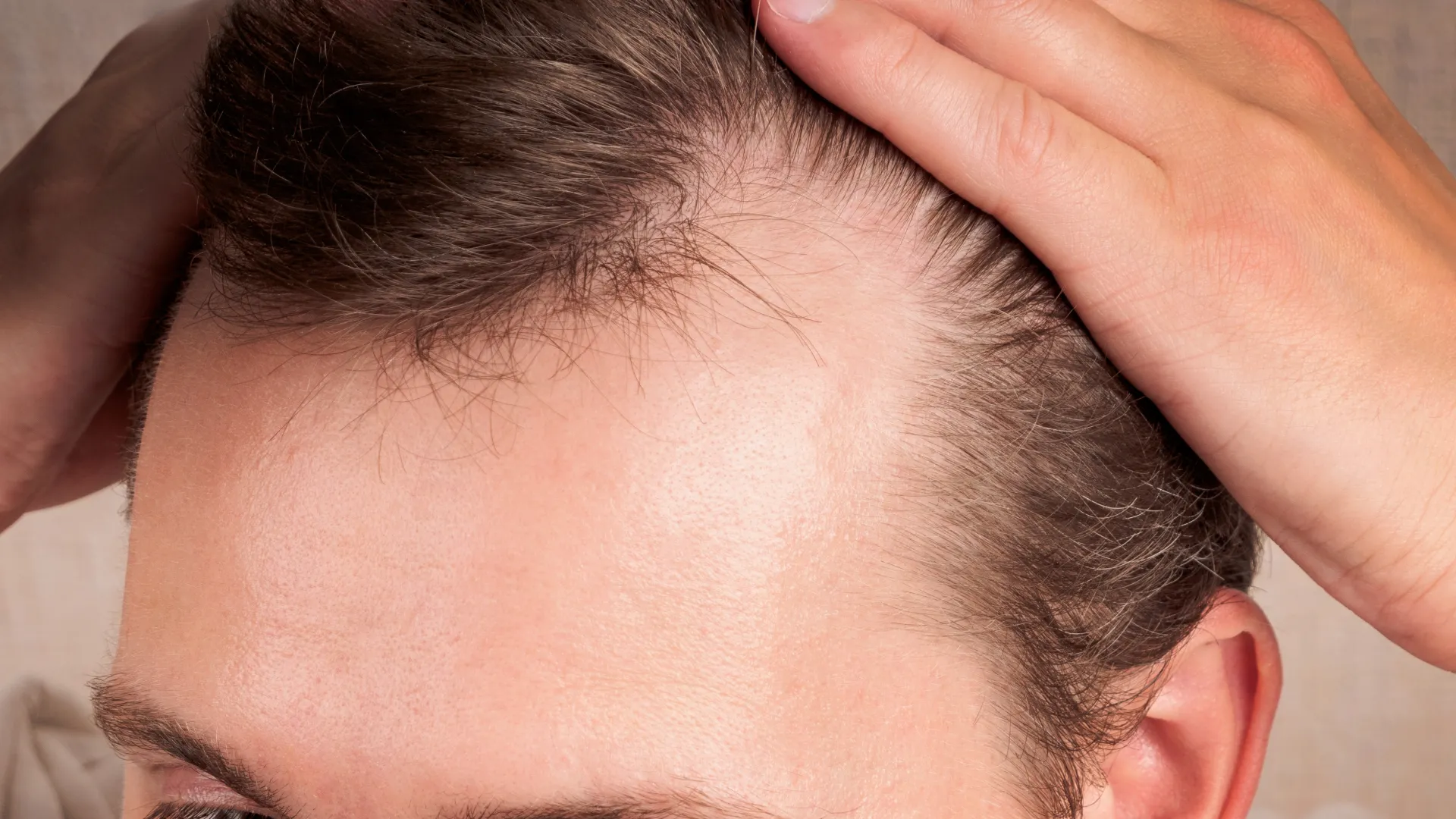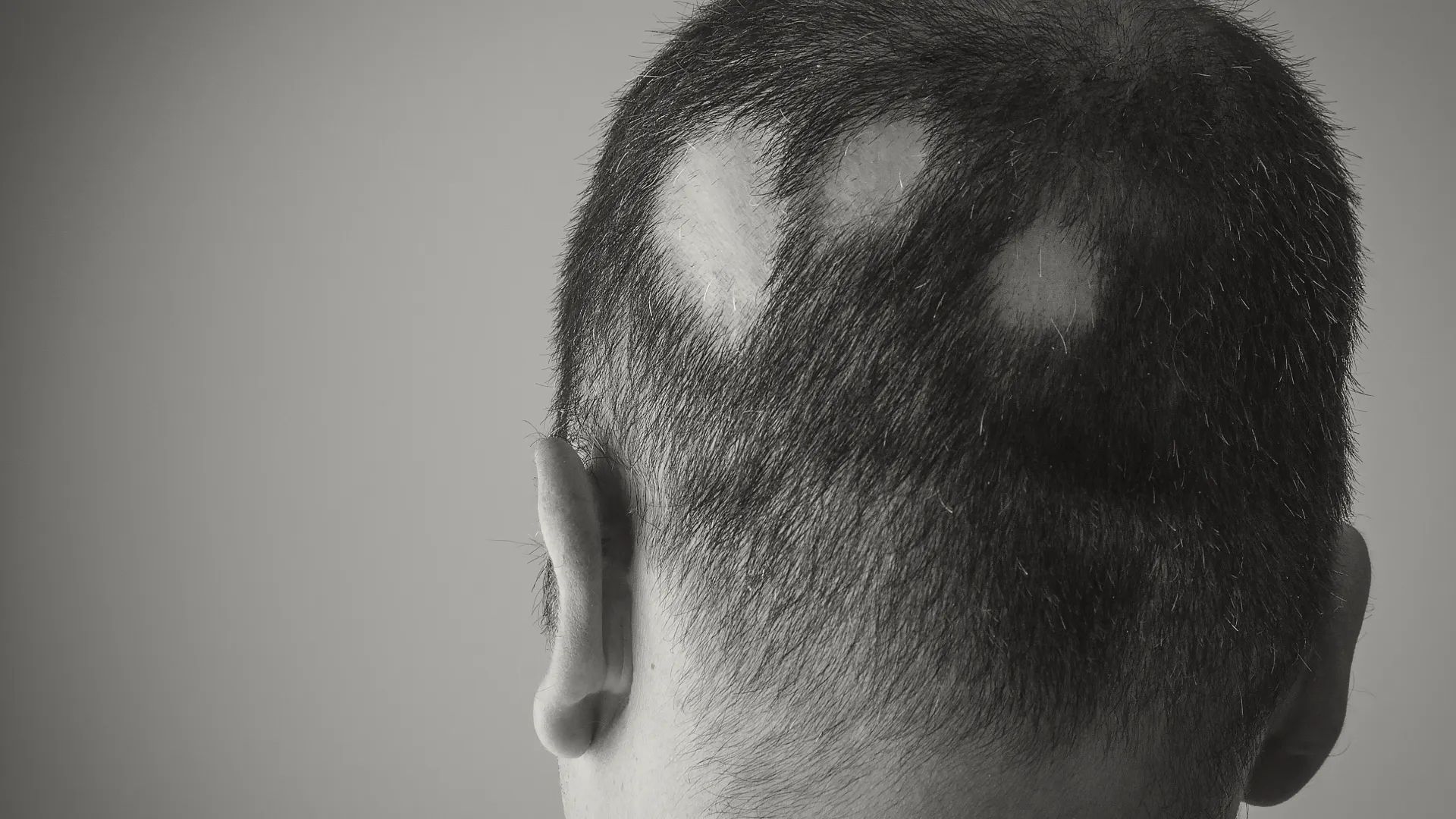Hair loss
Hair loss, or alopecia, is a common condition that affects millions of people worldwide. While often considered a cosmetic issue, hair loss can significantly impact the psychological well-being of patients and their quality of life.
The loss of about 100 hairs daily is considered normal within the hair renewal cycle, but this number can increase depending on hair care routines or seasonal changes.
The Hair Life Cycle
The hair life cycle includes three phases:
- Anagen Phase: This is the growth phase of the hair, lasting from 2 to 6 years. Normally, 80-85% of the hair on the scalp is in this stage.
- Catagen Phase: In this stage, lasting a few weeks to 2 months, the hair stops growing and prepares for shedding. Normally, 1-2% of the hair is in this phase.
- Telogen Phase: In this stage, the follicle is inactive and the hair falls out. It lasts 2-3 months, with 10-15% of the hair normally in this stage.
Types of hair loss
- Androgenetic Alopecia: Characterized by progressive thinning of hair. In men, it typically leads to a receding hairline and thinning at the crown or throughout the central area of the scalp. In women, it manifests as gradual thinning in the central area without receding of the frontal line.
- Alopecia Areata: An autoimmune disease that causes sudden hair loss in round patches. The immune system mistakenly attacks the hair follicles, leading to hair loss, which can affect any area of the body.
- Telogen Effluvium: This hair loss occurs when a large percentage of the hair follicles on the scalp abruptly and massively enter the telogen stage, where the hair stops growing and eventually falls out. Causes include severe febrile infections, childbirth, major injuries, surgical procedures, crash diets, certain medications, endocrine disorders, and intense stress. Hair loss appears about 3 months after the triggering event. It is usually temporary, stopping on its own or when the underlying cause is addressed.
- Traction Alopecia: Caused by chronic pulling of the hair, often seen in women who wear hairstyles that tightly pull on the hair. It primarily appears along the frontal hairline.
- Loose Anagen Hair Syndrome: Occurs in childhood, more frequently in girls and individuals with light-colored hair. In these patients, hair can be easily pulled out painlessly during brushing and does not grow long. No treatment is needed, as this condition tends to improve with age.
- Trichotillomania: A mental disorder characterized by the repetitive pulling of hair from the scalp or other areas of the body. Chronic trichotillomania can cause permanent damage to the scalp skin and lead to permanent scarring alopecia.
- Scarring Alopecia: Includes a group of hair loss disorders in which hair follicles are permanently destroyed, resulting in scarring in the area. Scarring can be due to the following causes:
- Traction alopecia and trichotillomania can progressively cause permanent scarring.
- Exogenous factors (trauma or burns).
- Autoimmune conditions (lupus erythematosus, lichen planus, scleroderma, etc.).
- Infections (folliculitis, fungal infections, and viral infections like shingles).
- Frontal Fibrosing Alopecia (FFA)
Causes of hair loss
Various factors can influence the onset of hair loss, such as:
- Genetics: A family history of hair loss significantly increases the likelihood of developing androgenetic alopecia.
- Hormonal Changes: Pregnancy, menopause, polycystic ovary syndrome (PCOS).
- Various Conditions: Autoimmune diseases, thyroid disorders, diabetes, iron deficiency anemia.
- Stress: Physical or emotional stress.
- Nutrition: Lack of essential vitamins and minerals (like iron, zinc, and biotin) can affect hair health.
- Medications: Certain medications (cancer treatments, antidepressants, anabolic steroids, etc.) may cause hair loss as a side effect.
Diagnosis
Diagnosing the cause of hair loss usually involves:
- Medical History: A detailed review of the patient’s medical history, family history, and recent stressors that may affect hair loss.
- Physical Examination: Trichoscopy is used to assess the pattern and extent of hair loss.
- Laboratory Testing: Blood tests to check for underlying conditions, hormone levels, and nutrient deficiencies.
- Biopsy: In rare cases, a small skin sample may be taken for further information and analysis.
Treatment
Treatment depends on the underlying cause and type of hair loss. Options include:
Medications
- Minoxidil: A topical treatment that stimulates hair growth and is effective for both men and women.
- Finasteride: An oral medication for men that reduces the production of dihydrotestosterone (DHT), a hormone linked to hair loss.
Hair restoration treatments
- PRF Therapy (Platelet Rich Fibrin): The evolution of the known PRP treatment, using the patient’s blood to promote hair growth through the release of growth factors directly to the follicles.
Lifestyle changes
- Healthy Diet: Ensuring a balanced diet rich in vitamins and minerals supports overall scalp health.
- Stress Management
Conclusion
Understanding the causes of hair loss and treatment options is essential for effective management. Early intervention can play a crucial role in achieving optimal outcomes for hair restoration and the overall well-being of the patient.


